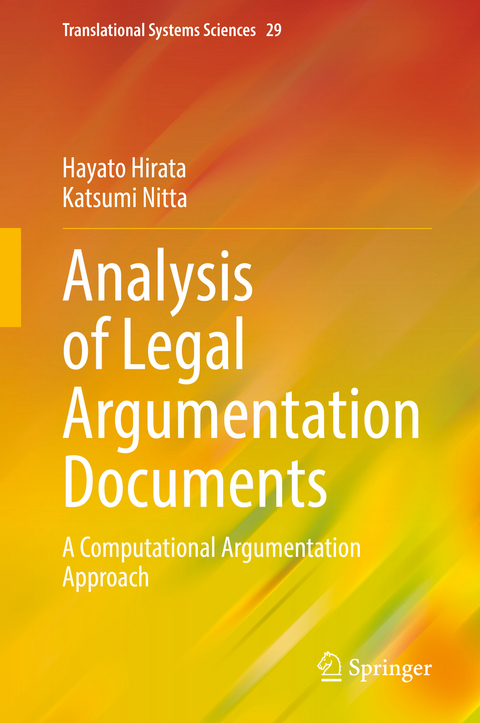
Analysis of Legal Argumentation Documents
Springer Verlag, Singapore
978-981-19-2927-4 (ISBN)
Second, a method of extracting factors (elements that characterize precedents and cases) and legal topoi from individual precedents and using them as the expression of precedents to analyze how the pattern of factors and legal topoi appearing in a group of precedents affects the judgment (plaintiff wins/defendant wins) is proposed. This method has been applied to a group of tax cases.
Third, the logical structure of 70 labor cases is described in detail by using factors and a bipolar argumentation framework (BAF) and an (extended argumentation framework (EAF) together. BAF describes the logical structure between plaintiff and defendant, and EAF describes the decision of the judge. Incorporating the legal topoi into the EAF of computational argumentation theory, the strength of the analysis of precedents by combined use of factored BAF and EAF, not only which argument the judge adopted could be specified. It was also possible to determine what kind of value judgment was made and to verify the logic.
The analysis methods in this book demonstrate the application of logic-based AI methods to the legal domain, and they contribute to the education and training of law school students in logical ways of argumentation.
Prof. Hayato Hirata, Professor at Asahi University (Faculty of Law and Graduate School of Law), received BA from Chuo University (1980), MA from Hiroshima University (1983, Master of Laws), Dr. of Laws from Meiji Gakuin University (2016, by thesis only), and Dr. of Engineering from Tokyo Institute of Technology Graduate School (2021). He had been the Dean of Asahi University School of Law (2013–2017) and Library Director of Asahi University (2019–2021). He is the President of the Japan Association of Business Management Law (2020–present). He has received the Award of the President of Nagoya District Court (2010, as a Civil Commissioner) and 2022 Award of the President of the Aichi Prefecture Civil Mediation Federation (2022, as a Civil Conciliation). He holds doctorates in two different fields, laws and engineering, and his research is an integration of arts and sciences. Prof. Katsumi Nitta, Professor Emeritus, Tokyo Institute of Technology, holds the degree of Dr. of Engineering. He graduated from the graduate school of Tokyo Institute of Technology and received MS and Dr. of Engineering in 1977 and 1980, respectively. He worked for Electro Technical Laboratory from 1980 to 1988 and engaged in the research of AI and law. In 1988, he moved to the Institute of New Generation Computer Technology and managed the development of AI application systems on the fifth-generation computer. From 1996 to 2016, he worked for Tokyo Institute of Technology and studied the argumentation theory, human agent interaction technology, multimodal communication technologies, and so on. He received the paper award from the Japan Society of Artificial Intelligence (JSAI) in 2013 and 2016 and JSAI Achievement Award in 2014 for the research of legal reasoning.
Chapter 1. Introduction .- Chapter 2. Related Research.- Chapter 3.- Factor-Based Argumentation Evaluation.- Chapter 4. Case Analysis Using Factors and Legal Topoi.- Chapter 5. Case Analysis for Case Law Education using Factors and Computational Argumentation Theory.- Chapter 6. Conclusion.
| Erscheinungsdatum | 17.08.2022 |
|---|---|
| Reihe/Serie | Translational Systems Sciences ; 29 |
| Zusatzinfo | 1 Illustrations, black and white; XIII, 155 p. 1 illus. |
| Verlagsort | Singapore |
| Sprache | englisch |
| Maße | 155 x 235 mm |
| Themenwelt | Informatik ► Theorie / Studium ► Künstliche Intelligenz / Robotik |
| Recht / Steuern ► Allgemeines / Lexika | |
| Recht / Steuern ► Arbeits- / Sozialrecht ► Arbeitsrecht | |
| Recht / Steuern ► EU / Internationales Recht | |
| ISBN-10 | 981-19-2927-0 / 9811929270 |
| ISBN-13 | 978-981-19-2927-4 / 9789811929274 |
| Zustand | Neuware |
| Informationen gemäß Produktsicherheitsverordnung (GPSR) | |
| Haben Sie eine Frage zum Produkt? |
aus dem Bereich


